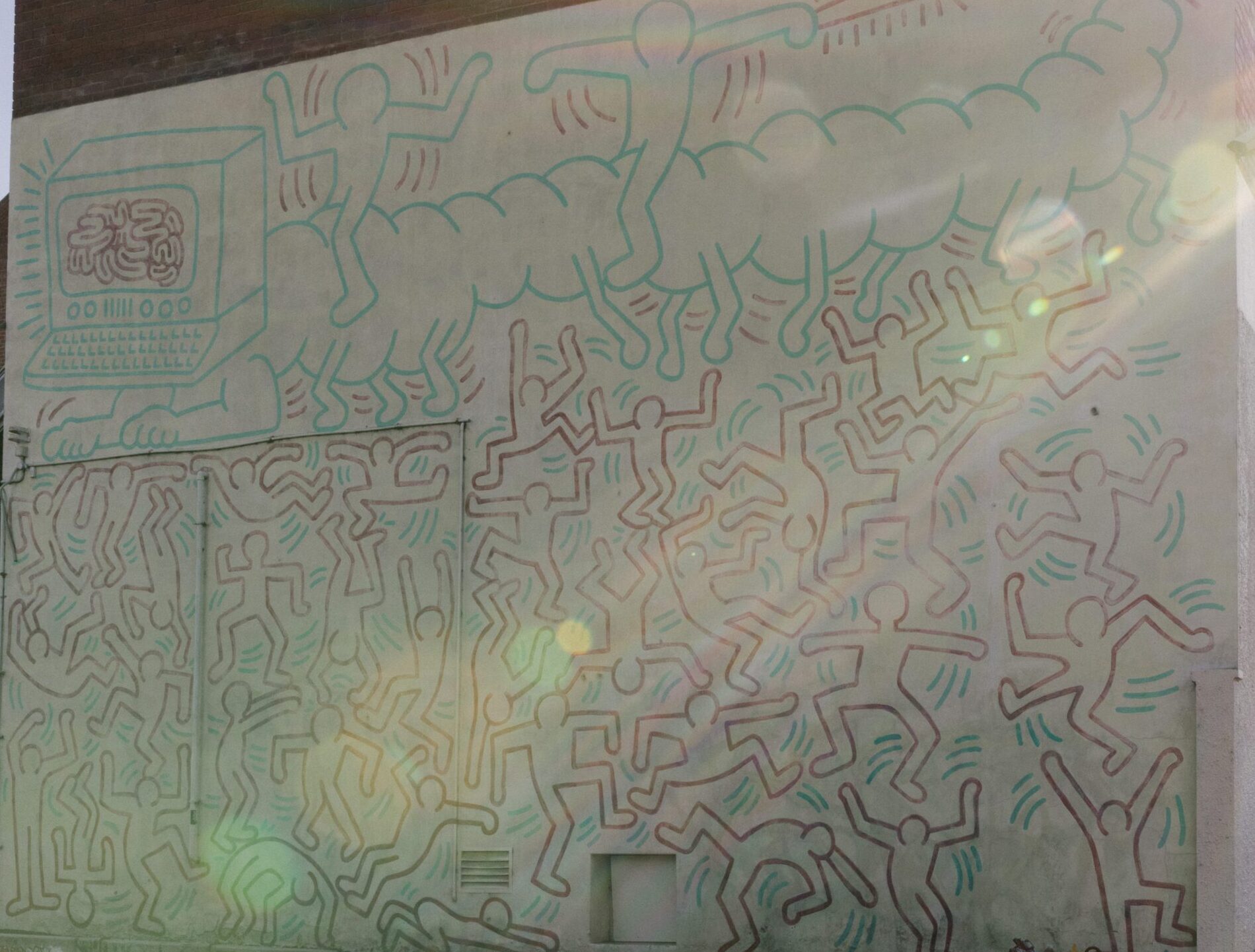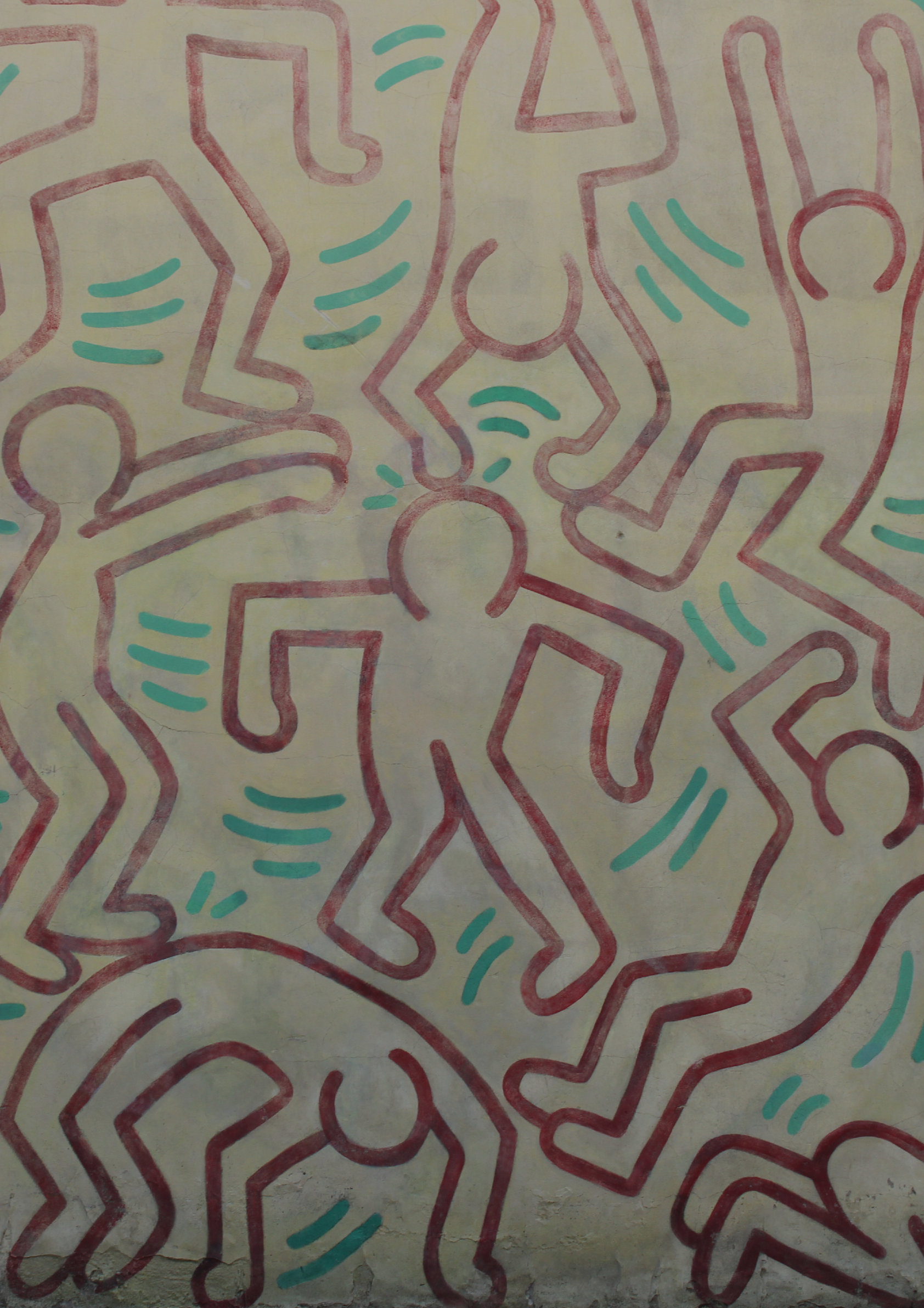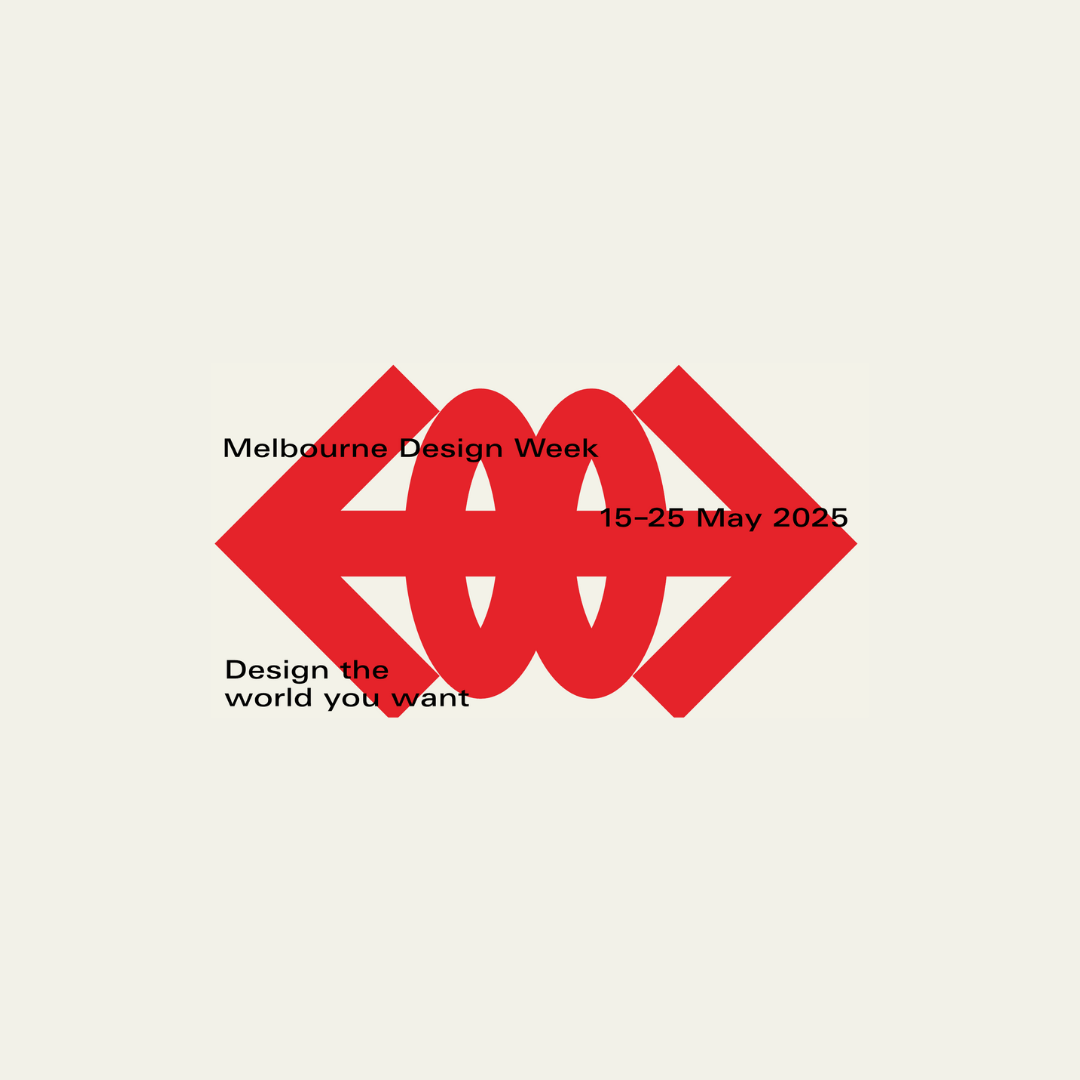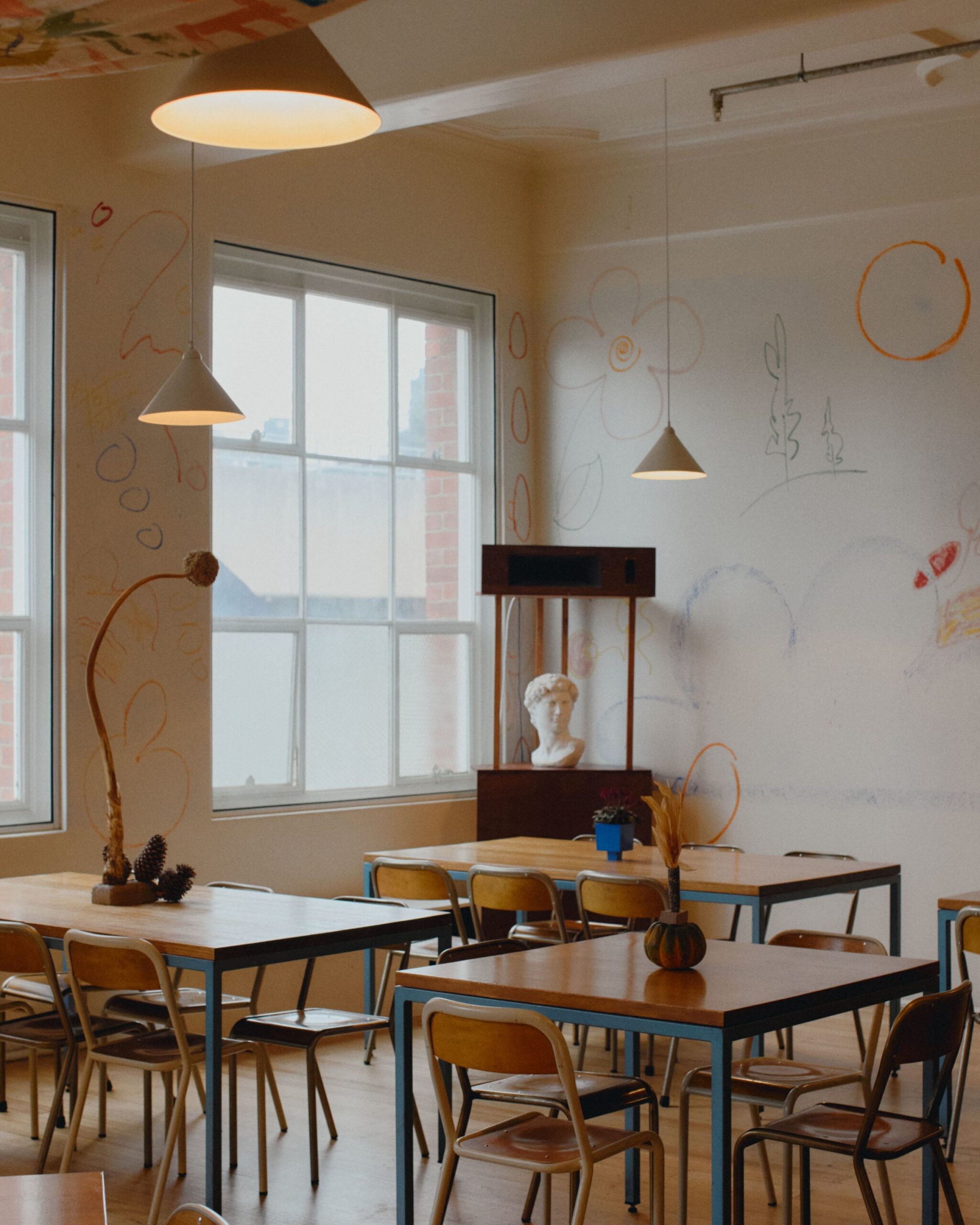40 years of 'Untitled' by Keith Haring
Keith Haring 40th Anniversary

“It’s the only permanent thing I did while I was in Australia”
In March of 1984 Keith Haring spent a small window of time in Melbourne. On a warm, windy day he quickly produced a mural on the side of the then Collingwood Technical School in front of an audience of students. Whether he knew it or not, this mural was going to have a lasting impact on the artistic culture of the space that would one day become Collingwood Yards. This month we’re celebrating the 40th anniversary of his fateful trip to Australia and the legacy he left here.
Although born in Pennsylvania, Haring is now regarded as an icon of the New York City pop art scene. Haring’s artistic journey began through his chalk graffiti, transforming empty black panels meant for advertising on the New York subway into impromptu canvases. This, now world famous imagery, built a reputation that led to him appearing in exhibitions alongside contemporaries such as Jean-Michel Basquiat who had also found fame through graffiti.
Haring was also a skilled promoter, following in the footsteps of other New York art legends such as Andy Warhol, Haring insisted on breaking down artistic barriers and never considered it beneath him to spread his artwork through any means he could find. Haring was regarded as intensely social and continued to paint throughout the streets of New York or provide fans of his works for free despite his growing status as an artist.
This led to the opening of the Pop Shop through which he merchandised his work in 1986 and, despite calls of selling out, the artist preferred his work be accessible to the public rather than restricted from them through prohibitive prices.
Haring’s artwork was often directly political, never shying away from expressing his perspectives on the world, whether it was abuse of power, LGBTQ+ rights, the crack epidemic, or the crisis of HIV/AIDS, Haring often addressed these topics bluntly without room for misunderstanding. This didn’t stop his work from having an enigmatic quality to it either, Haring’s figures straddled the line of language, with his simple figures becoming symbols within themselves able to express a certain universalism.
His outgoing personality eventually brought him to Melbourne where he took part in the Moomba celebrations of 1984 and contributed to the National Gallery of Victoria’s entrance window. While here, Haring completed a mural on the side of the Collingwood Technical School which has been maintained to this day and forms a dynamic part of Collingwood Yards’ identity.
This work is imbued with an element of mystery, and the piece has been left untitled adding to this dynamism of interpretation. The mural depicts a multi legged, computer faced creature above a field of Haring’s human figures imbued with the excited movements he was known for. The image could be regarded as prescient, putting the computer, a new technology at the time, at the head of the animal and above a mass of people almost predicting its eventual cultural domination.
All the figures below were integral to the work, and Haring viewed them as unified despite their disparate actions “All of these people are doing different things, some of them are like dancing, they are like rap dancing, or they are like acrobatic some of them are almost like they’re fighting, but… the way they’re all together… If one of them comes out, the whole thing falls down.” He said of the work.
Haring produced the work very quickly with the students of the technical school in attendance to watch him work. Haring regarded the process of creation as just as important an artistic experience as the completed work itself.
This mural is one of the few remaining international works of Haring and it’s maintained to this day by the Keith Haring foundation.
Ultimately Haring would tragically pass away in 1990 at 31 years old from complications stemming from AIDS, a disease that ravaged the LGBTQ+ community throughout the 80s and the 90s. Despite this, Haring’s work is still instantly recognisable and one of the most prolifically reproduced in the world, with Collingwood Yards inheriting one of his most interesting and enigmatic works.








